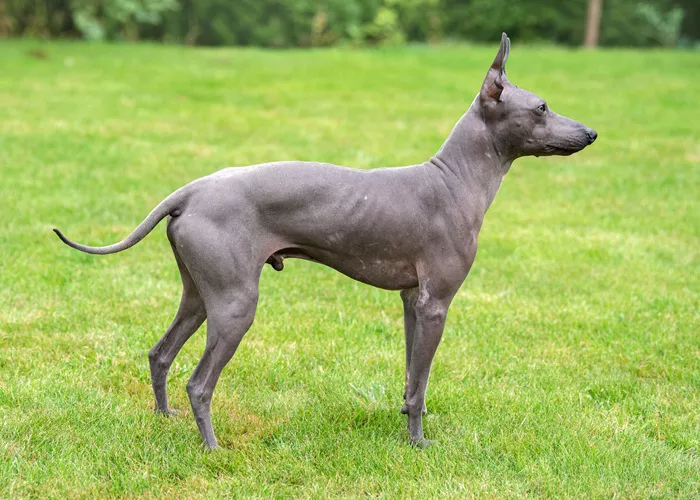Hairless dogs, such as the Mexican Hairless Dog (Xoloitzcuintli), Peruvian Hairless Dog, and Chinese Crested Dog, are unique breeds that have captivated humans for centuries. Their lack of fur sets them apart from other dogs, offering distinct advantages that make them ideal companions for specific lifestyles. Below, we explore the benefits of owning a hairless dog, supported by scientific insights and cultural history.
Hypoallergenic and Allergy-Friendly
Reduced Allergic Reactions
Hairless dogs are an excellent choice for people with allergies. Unlike furry breeds, they shed little to no dander—the primary trigger for pet allergies. Their smooth skin minimizes the accumulation of allergens like pollen or dust, making them safer for sensitive individuals. For example, the Peruvian Hairless Dog’s near-complete lack of fur has even led to proposals to gift them to allergy-prone individuals, such as former U.S. President Obama’s daughter.
Easy Cleaning
Without fur, these dogs do not leave hair on furniture or clothing. This reduces the need for constant vacuuming or lint-rolling, a significant advantage for busy households.
Low Maintenance Grooming
Minimal Shedding
Hairless dogs eliminate the hassle of shedding seasons. Owners avoid the frustration of daily brushing or expensive grooming sessions. For instance, Mexican Hairless Dogs require only occasional baths with mild shampoo to maintain skin health.
Simplified Skin Care
While their skin needs protection, care routines are straightforward:
Sun Protection: Applying pet-safe sunscreen prevents UV damage.
Moisturizing: Regular moisturizing keeps their skin supple and prevents dryness.
Temperature Control: Indoor temperatures should stay between 20–25°C (68–77°F) to avoid chills or overheating.
Therapeutic and Health Benefits
Natural Heat Source
Hairless dogs, like the Peruvian Hairless Dog, have a body temperature of approximately 40°C (104°F). Their warm skin acts as a natural “heating pad,” providing comfort to individuals with arthritis or circulatory issues. In Peru, elderly owners often sleep with these dogs to alleviate joint pain.
Traditional Healing Practices
In Peruvian culture, hairless dogs are believed to have medicinal properties:
- Their saliva is thought to heal wounds and combat skin infections.
- Contact with their skin may relieve asthma or rheumatism.
- Even their urine and feces are traditionally used to treat ailments like diarrhea or eye infections.
Note: These claims lack modern scientific validation but highlight the cultural significance of these dogs.
Ideal for Small Living Spaces
Low Exercise Needs
Hairless breeds, such as the Mexican Hairless Dog, are moderately active. They thrive in apartments or homes without large yards, requiring only short daily walks or play sessions.
Quiet Companionship
Unlike high-energy breeds, hairless dogs are often calm and adaptable. The Mexican Hairless Dog, for example, is known for its gentle temperament and minimal barking, making it suitable for urban environments.
Unique Bonding and Emotional Support
Enhanced Human Connection
Hairless dogs crave physical contact due to their lack of fur. Skin-to-skin interaction strengthens the bond between pet and owner, offering emotional comfort. Studies suggest that co-sleeping with pets can improve sleep quality by reducing anxiety.
Guarding Instincts
The Peruvian Hairless Dog is renowned for its loyalty and protective nature. With exceptional hearing and agility, they serve as effective watchdogs, alerting owners to intruders while remaining gentle with children.
Cultural and Historical Significance
Ancient Heritage
Hairless dogs have deep-rooted histories:
Peruvian Hairless Dogs: Domesticated over 4,000 years ago, they were buried alongside Inca nobility and revered as spiritual guides for the afterlife.
Mexican Hairless Dogs: Aztecs believed they carried the souls of the dead to the underworld.
National Treasures
Peru declared its hairless dog a national heritage animal in 2001, with June 12 designated as “Peruvian Hairless Dog Day.” Their cultural status rivals that of China’s giant panda.
Adaptability to Climate Extremes
Heat Tolerance
Hairless dogs handle warm climates well, though sunscreen is essential. Their skin darkens with sun exposure, a natural adaptation to UV rays.
Cold Resistance
Despite lacking fur, breeds like the Peruvian Hairless Dog withstand freezing temperatures. Their high metabolic rate and body heat allow them to survive in icy Andean nights without extra clothing.
Considerations for Owning a Hairless Dog
While their benefits are numerous, hairless dogs require specific care:
Skin Protection: Avoid sharp objects and rough surfaces to prevent injuries.
Regular Vet Visits: Monitor for skin infections or dental issues (common in hairless breeds).
Socialization: Early training reduces skittishness around strangers.
Conclusion
Hairless dogs offer a blend of practicality, cultural richness, and emotional companionship. Their hypoallergenic nature, low grooming needs, and therapeutic qualities make them ideal for allergy sufferers, urban dwellers, and those seeking a unique pet. By understanding their requirements, owners can enjoy the remarkable benefits of these ancient, hairless companions.
Related Topics:
WHAT THE AMERICAN HAIRLESS TERRIER CAN BRING TO PEOPLE?
WHAT IS THE ATTITUDE OF THE AMERICAN HAIRLESS TERRIER?
WHY DO PEOPLE LIKE HAIRLESS PETS


